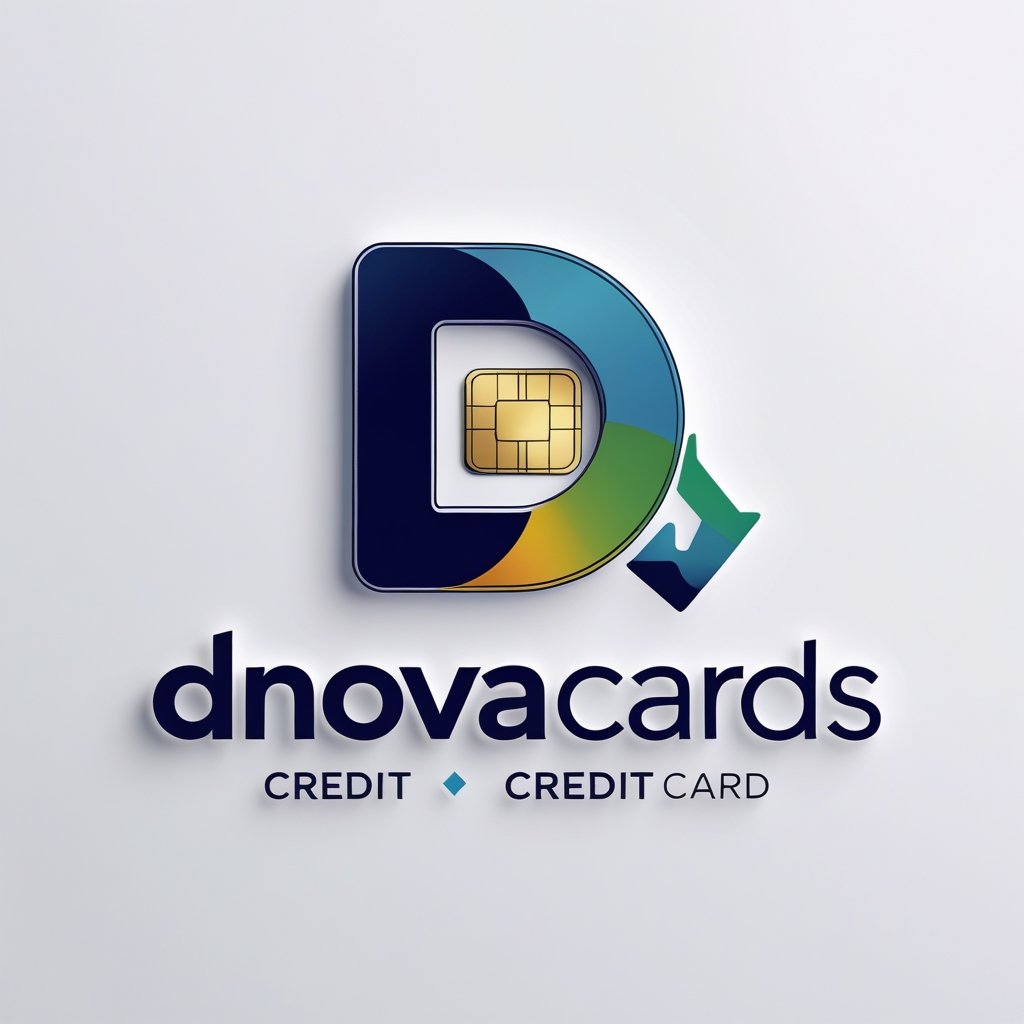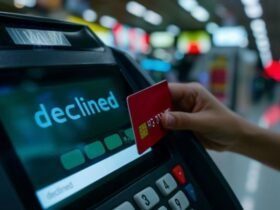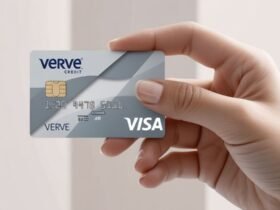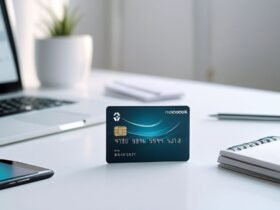If you’re someone with bad credit and wondering, “What credit cards are good for people with bad credit?” I’ve been in your shoes, and I know how challenging it can feel to find the right credit card. You might be wondering if there’s even a good option out there for you.
Don’t worry there are! This guide will walk you through the steps to find the best credit cards, understand your choices, and rebuild your financial life.
Key Takeaways
- Start Small: Begin with a secured or low-fee unsecured credit card tailored for bad credit.
- Pay On Time: Payment history is the biggest factor in improving your credit score.
- Keep Balances Low: Aim for a credit utilization rate below 30% to boost your score.
- Monitor Your Credit: Regularly check your credit report to track progress and fix errors.
- Avoid Hidden Fees: Choose cards with transparent terms and minimal fees.
- Be Patient: Building good credit takes time, but consistent effort pays off in the long run.
Understanding Bad Credit and Its Impact
Let’s start with the basics. If you’re unsure about what bad credit really means, it’s essentially a low credit score. In most cases, a FICO score below 580 is considered bad. This can happen for many reasons, such as missed payments, carrying high balances, or even just not having much credit history.
Why Does Bad Credit Matter?
Your credit score affects almost everything financial—from qualifying for loans to the interest rates you get. A low score means higher interest rates, fewer loan options, and difficulty securing housing or even certain jobs. It can feel limiting, but there’s hope.
How Does Bad Credit Happen?
Bad credit can result from:
- Missed Payments: Late or missed payments make up a significant portion of your credit score.
- High Credit Utilization: Using a large percentage of your available credit can hurt your score.
- Limited Credit History: If you don’t have much credit activity, it’s hard for lenders to assess your reliability.
- Defaults or Bankruptcy: These major financial events can stay on your report for years, significantly lowering your score.
The Silver Lining
Here’s the good news: with the right credit card and habits, you can turn your situation around. I’ve seen people—including myself—go from bad credit to good credit by taking small, consistent steps. It might take time, but each responsible decision moves you closer to a healthier financial future.
Why Use a Credit Card to Rebuild Credit?
If you’ve found yourself with bad credit, you might be asking, “How can a credit card help when I already have bad credit?” It’s a valid question because credit cards are often associated with debt and financial struggles. However, when used responsibly, they can be one of the most effective tools for improving your credit score. Let’s break this down further to understand why.
The Benefits of Credit Cards for Bad Credit
1. Build Payment History
Your payment history accounts for 35% of your FICO credit score, making it the single largest factor. By consistently paying your credit card bill on time every month, you demonstrate to lenders that you are a reliable borrower.
Each on-time payment is like a positive mark on your credit report. Over time, these payments can significantly improve your score.
Think of it this way: every month you pay your credit card bill on time, you’re essentially showing future lenders that you’ve turned over a new leaf. Even a secured credit card with a small limit can help you build this positive history.
2. Lower Credit Utilization
Credit utilization is the ratio of how much credit you use compared to how much is available to you.
It accounts for 30% of your FICO score. For example, if your credit limit is $500 and you consistently carry a balance of $400, your utilization is 80%—which is considered very high and can hurt your score.
Using a credit card strategically allows you to keep your credit utilization low.
Experts recommend staying below 30% of your credit limit, but aiming for 10% or lower is even better. This shows lenders that you’re not overly reliant on credit and can manage your finances effectively.
For instance, if you have a $500 limit, try not to carry a balance higher than $150 at any given time. Even better, pay off your balance in full each month to avoid interest charges altogether.
3. Access to Credit Bureaus
Most credit cards especially those designed for individuals with bad credit—report your activity to the three major credit bureaus:
Experian, Equifax, and TransUnion. This is crucial because these bureaus compile the information that determines your credit score.
By ensuring your positive actions (like on-time payments and low utilization) are reported, you’re actively building a stronger credit profile.
Over time, this consistent reporting helps reflect your financial responsibility, which can lead to better credit offers in the future.
Some secured and unsecured cards for bad credit, like the Discover it® Secured or Capital One Platinum Secured, explicitly state that they report to all three bureaus. When choosing a card, make sure it offers this feature because not all cards do.
Why Credit Cards Work for Rebuilding Credit
Credit cards give you a structured way to rebuild credit. They provide an ongoing opportunity to show positive financial habits—something that’s not always possible with loans or other financial products. By focusing on small, consistent wins, like paying on time and keeping balances low, you’re sending clear signals to lenders that you’re ready for more significant financial opportunities.
Features to Look for in a Credit Card for Bad Credit
When shopping for a credit card, not all options are created equal. Here’s what you need to prioritize:
- Low Fees: Look for cards with no annual fees or low upfront costs.
- Reasonable APR: While interest rates may be higher, you can avoid them by paying off your balance monthly.
- Reporting to Credit Bureaus: Make sure the card reports your payments to all three credit bureaus.
- Upgrade Options: Some cards allow you to transition to better credit cards as your score improves.
Types of Credit Cards for People with Bad Credit
Now that you know what to look for, let’s dive into the types of cards available for bad credit. There are several categories, and each serves a specific purpose.
1. Secured Credit Cards
A secured credit card is a great starting point. You’ll need to provide a refundable security deposit, which becomes your credit limit. For example, if you deposit $200, your credit limit is $200.
Pros:
- Easier approval process.
- Reports to credit bureaus to help you build credit.
- Allows you to upgrade to unsecured cards over time.
Examples:
- Discover it® Secured Card: No annual fee, reports to all bureaus, and offers cashback rewards.
- Capital One Platinum Secured: Low minimum deposit with opportunities to increase your credit limit.
2. Unsecured Credit Cards
Unsecured credit cards don’t require a deposit, but they usually come with higher fees and lower credit limits for those with bad credit.
Pros:
- No need for a security deposit.
- Some cards offer rewards or cash-back programs.
Examples:
- Milestone® Mastercard®: Low annual fee and available for those with poor credit.
- Credit One Bank Platinum Visa: Offers cashback rewards on eligible purchases.
3. Credit Builder Cards
These are specifically designed for people looking to rebuild credit. They often come with educational tools to help you understand how to manage credit responsibly.
Examples:
- Chime Credit Builder Visa®: No fees and helps build credit without requiring a deposit.
4. Store Credit Cards
Store cards are easier to get approved for but can only be used at specific retailers. These aren’t ideal for everyone but can work if you frequently shop at a particular store.
Examples:
- Target RedCard or Amazon Store Card: Great for frequent shoppers, but watch out for high interest rates.
Top Credit Cards for People with Bad Credit (2025)
Here’s my curated list of some of the best options:
Secured Cards
- Discover it® Secured: Rewards program, no annual fee, and reports to all credit bureaus.
- OpenSky® Secured Visa® Credit Card: No credit check required, perfect for those with severely damaged credit.
Unsecured Cards
- Indigo® Platinum Mastercard®: Easy pre-qualification with no impact on your score.
- Total Visa® Credit Card: Quick approval process, but watch out for higher fees.
Tips to Use Your Credit Card Responsibly
To see real improvement in your credit score, it’s crucial to use your card the right way. Here are some tips:
- Always Pay on Time: Even one missed payment can lower your score. Set up autopay to avoid this.
- Keep Balances Low: Aim to use less than 30% of your credit limit.
- Avoid Opening Too Many Cards: Multiple applications can hurt your score.
- Monitor Your Credit: Use tools like Credit Karma or Experian to track your progress.
My Opinion
Rebuilding your credit isn’t easy I’ve been there but it’s possible with the right tools.
Credit cards for bad credit can be the stepping stone you need for a brighter financial future. Start by exploring the options I’ve shared, and take small, consistent steps. Every positive choice you make today can lead to major improvements down the road.
Good luck you’ve got this!
















Leave a Reply
View Comments